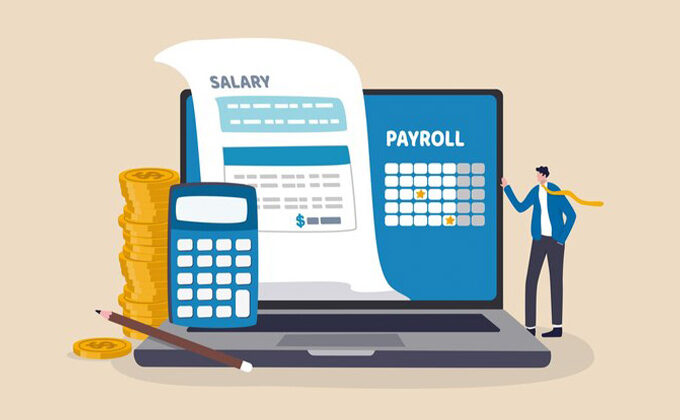Managing outstanding balances efficiently is essential for maintaining financial health and avoiding unnecessary penalties. This article explains the types of outstanding balances impact, and practical ways to handle outstanding balances. It will help you make educated financial decisions.
What is an Outstanding Balance?
An outstanding balance is the amount that you are not been paid. You are obligated to pay. This can comprise diverse components like balance transfer and purchases (both offline and online) and cash advances, interest charges, and other costs. The balance is the amount of the debt that is still owed after partial payment, and is a crucial part of your obligations to pay.
If it’s the outstanding balance on your credit card, loan, or invoice for business, it’s important to monitor the amount due. For people, credit card balances could accrue penalties and interest, while companies could face problems with cash flow due to late payments.
The most common reasons for a delinquent balance are the occurrence of financial problems, forgetfulness or disagreements over disputes over services or products offered. Resolving outstanding balances quickly will help avoid further financial problems.
How Outstanding Amount Work?
Outstanding balances refer to amounts that remain unpaid on financial obligations following incomplete payments or not making any payments whatsoever. These balances build up until they are completely paid. Often, they accrue fees for late payment or interest when not dealt with promptly.
Types of Outstanding Balances
Credit Card Balances
These are the unpaid amounts on your credit card following paying in part. The balances will accrue interest if they are not paid in time, which can result in more expensive repayments and the possibility of charges for late payment.
Loan Repayment Balances
This type of balance represents the remaining balance owed on loans. It comprises the principal plus overdue interest and accrued interest. Unpaid loan repayments could rise due to compounding interest. Therefore, it is essential to keep your payments on track to avoid financial expenses.
Also read: Are Flex Loans Right for You? Pros, Cons, and Alternatives
Pending Invoices in Business Transactions
Many businesses face invoices that are unpaid for products or services they’ve offered but have not yet been paid for. The pending balances can disrupt the cash flow, causing businesses to require tracking and following up on payments that are late to ensure smooth operation.
Finding the Outstanding Balance Amount
Being aware of your outstanding balance is crucial for both individuals and companies, since it has a direct impact on your financial stability and planning. Regularly checking your balances can help you make payments on time and avoid penalties. It also helps you keep your credit score high.
To see your balance, log in to your online banking account or mobile app and go to the loan or credit card section. The balance will display:
- Principal Amount: Original amount due
- Accrued interest: Charges for interest on the outstanding balance
- Fees: Late fees or additional charges
Credit card transactions cover purchases, cash advances, and balance transfers. For loans, this includes both interest and principal. Monitoring your account regularly or getting in touch with the lender can ensure that the loan is accurate. For companies, using accounting software to keep track of invoices is essential for managing late payments.
Important Components of Outstanding Loan Balance
1. Remaining Principal Loan Amount
It’s the original amount of the loan without making any repayments already made. This is the major part of the loan balance, and it shows the amount that you have to pay the lender. The principal balance is crucial in determining how much you’ll have to pay to pay off the obligation.
2. Overdue Interest
Overdue interest is the additional amount that is added to the loan if you don’t make your payments on time. It’s typically a percentage of the balance outstanding and can increase the amount due if you don’t pay your payments punctually.
3. Accrued Interest
Accrued Interest is the interest that accumulates as time passes on the remaining loan amount. It is calculated using the principal amount and the interest rate that was agreed upon at the time of taking the loan. The interest is added to the debt over time, thereby increasing the debt owed by the borrower. If the loan isn’t completed, then the interest accrues and adds to the total amount to be repaid. The longer the loan is not paid, the more interest that accrues, which will result in a higher balance.
What Happens When You Don’t Pay Outstanding Balances
Interest Accumulation and Late Fees
If you don’t pay on outstanding balances, the interest and late fees start to accrue, increasing your total amount owed. Loans and credit cards typically have high interest rates, which can cause the debt to increase rapidly over time.
In addition, every late payment may result in an additional penalty, increasing your financial strain. The additional charges can hinder the ability to settle the debt and can delay the repayment process. In time, the accumulation of these charges can lead to a greater amount of debt than what was originally due.
Impact on Credit Score
Incomplete outstanding balances can negatively affect your credit score, which is an important element in determining whether you are eligible for credit and loans. A lower score on your credit report means greater borrowing costs because lenders see you as riskier. Late payments, defaults, and arrears on accounts may remain in your credit file for years, which can affect your ability to get favorable conditions for loans.
A few late payments can leave a lasting impact, making it more difficult to obtain financial services next time. Maintaining a high credit score is essential for financial security, and settling the balances in time will help maintain it.
Potential Legal Actions for Prolonged Non-Payment
If you don’t resolve outstanding balances over long periods, the creditors could use legal recourse to collect the amount owed. This could include court proceedings where a judge can ordain the suspension of wages or the taking of assets to pay the debt. Legal proceedings can be expensive and time-consuming, and stressful, which can further complicate your financial circumstances.
Furthermore, long-term non-payment may result in a judgment being filed against you, which will remain on your financial records for many years. Legal actions for recovery can affect your professional reputation and your relationships with lenders.
Also read: What is Provisional Credit? A Complete Guide
How to Clear Outstanding Payments
1. Set Up Automatic Payments
Automating your payment schedules ensures that payments are paid on time, without having to remember the due date for each one. This helps avoid the accumulation of interest costs that can increase the balance you have. When you set up automatic payments, you will be able to prioritize your finances, without the burden of missing deadlines, making sure your debts are paid on time and on time, while maintaining your credit score up to date.
2. Prioritise High-Interest Debts
Prioritize paying off credit cards or loans with the highest rates first. The high-interest debts will quickly grow and increase the amount due. If you focus on the debts that are most high-interest first, you can lower the total interest burden and make it simpler to pay off the remaining balances more quickly. This method lets you save money over the long run and ease the financial strain.
3. Negotiate Payment Terms
If you find it difficult to pay your bills, contact your service providers or creditors and request more manageable terms. This could mean prolonging the repayment time or cutting down, or reducing the interest rate. A lot of lenders will bargain if you are proactive in communicating your situation and offer temporary relief. Negotiating terms for payment can greatly influence your ability to settle your balances without overburdening your budget.
4. Consolidate Your Debt
Consolidating outstanding debts into one loan can help simplify your finances and reduce overall interest payments. By combining multiple debts into a single loan that has a lower interest rate, you can reduce the amount of your monthly payments and only have one due date to keep track of. This will help you simplify your payments and make managing your obligations much easier, eventually making it easier to move towards being debt-free.
5. Track Your Expenses
Regularly monitoring your spending habits is essential to determine areas where you can cut back. This includes cutting down on discretionary expenses like eating out or entertainment. You can put more money toward paying off your outstanding balances by discovering ways to cut out unnecessary expenses. The tracking expenses will help to stay within your budget and prioritize debt elimination, which allows you to pay back the balance faster and avoid further financial stress.
6. Make Partial Payments
If you’re not able to pay your debt in full, but you can make partial payments, it’s nevertheless a move in your right direction. Infrequent, smaller payments could reduce the amount owed in the long run, stopping it from escalating more due to interest or late fees. While it could take longer to pay off this debt than making part payments indicates a commitment to settle the debt. Regularly paying these bills will slowly reduce the amount of debt you have and improve your financial situation.
Final Thoughts
Addressing outstanding balances is important to financial stability for companies and individuals alike, whether in business or personal situations. You can regain control of your finances through preventative measures that include regular checking, timely payments, and open communications with customers and lenders.
Effectively managing outstanding balances not only allows you to avoid excessive fees and interest charges but can also boost cash flow and credit health. Staying on top of finances requires paying any balances off immediately to reduce long-term financial difficulties; taking charge now could bring about improved overall financial wellness soon enough.















Leave a comment